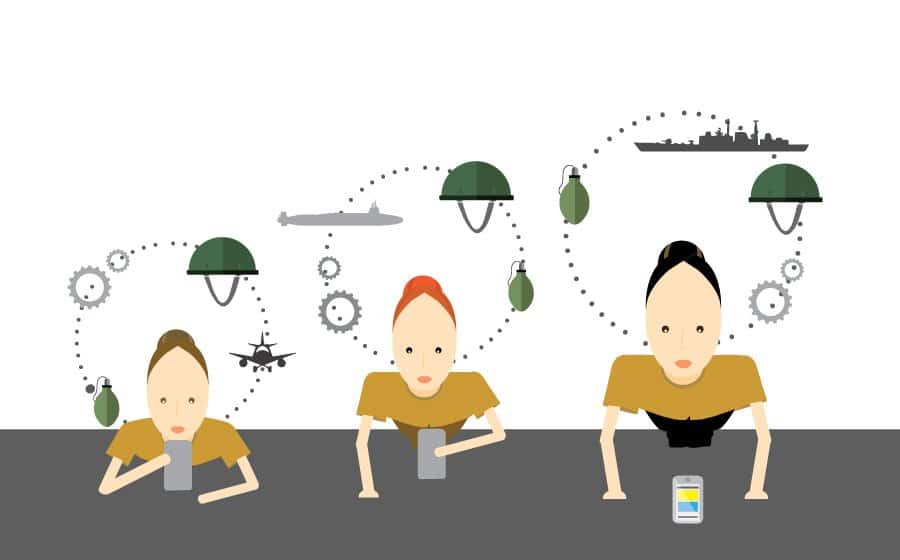When you think of military boot camp, you probably envision drill sergeants, along with plenty of blood, sweat, and tears. But don’t forget that not all military training is done on a muddy field. In fact, a shift in the way the military trains personnel could have troops just as likely tapping away on smartphones as they are doing pushups.
So why the shift in training tactics? The strategy is all about mLearning: Small, bite-sized pieces of information that can be used to train personnel anytime, anywhere. Here’s why the military is making the change to mLearning (and why your organization should follow suit).
Mobile Learning is Ideal for Mandatory Training
Not all training is an ongoing process and for the military, sometimes it’s about getting in, getting out, and moving on with training. Mandatory topics for compliance purposes don’t require the same attention that other training does, so mLearning is ideal for passing off certain topics or courses quickly and without fanfare.
mLearning is Fluff-Free
Because mLearning design is generally lean because it is optimized for mobile technology, it doesn’t have the bells and whistles that desktop learning typically has. And, for time-crunched military personnel who want to get straight to the point, that low-fluff approach is completely necessary. Mobile learning modules require a lower degree of engagement and interaction, which means the information is straight-to-the-point and in the here and now for military purposes.
Mobile Modules are Low Bandwidth Applications
When you have an unreliable Internet connection, you can’t waste bandwidth on image-heavy pages that take forever to load. Mobile learning loads faster than desktop applications, which means personnel stationed in areas with slow and unreliable Internet connections can still participate without eating up bandwidth (or the frustration that comes from slow-loading pages and applications).
mLearning Respects the User’s Time
In a study presented at the 2011 Interservice/Industry Training, Simulation, and Education Conference, military subjects participated in several types of training to measure how effective those training methods were in a high-stakes application. When surveyed, 34 percent of respondents said that convenience was the main reason they preferred mobile learning, while 22 percent preferred mLearning because it improved time management.
Military professionals simply don’t have an hour to sit in front of a computer and participate in training, regardless of the topic or its importance. By offering mLearning, the military respects each users’ time and makes it easy to log in and participate across the globe.
Mobile Learning is Ideal for Restricted Access
The nature of military training is such that restrictions and classified information needs to be shared with only those who have the necessary clearance. Using secure servers and military devices, it’s possible to share classified information and training in a private and secure way. This ensures that training plays by the necessary rules and regulations while still getting the right information to the right people.
In the end, 70 percent of military personnel surveyed in 2011 said they preferred mobile learning over traditional training. And if the military gets that mLearning is a valuable training method, shouldn’t we all fall in line?






